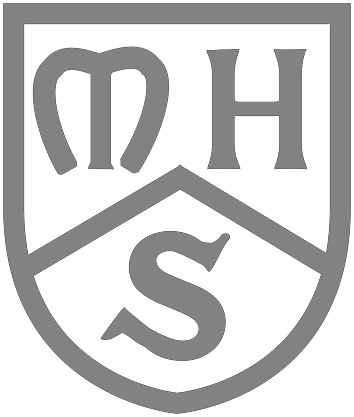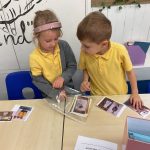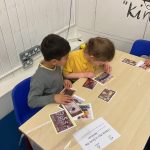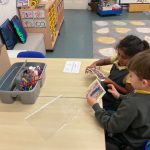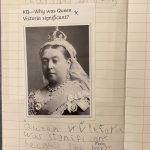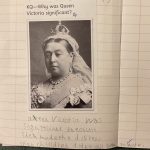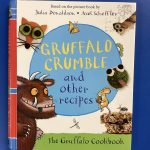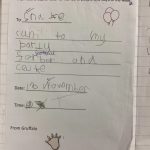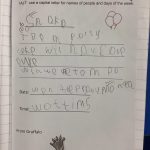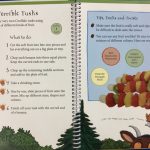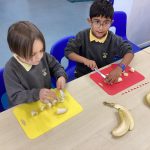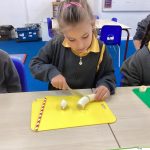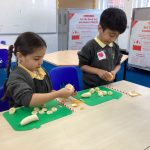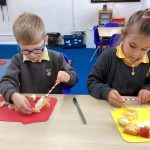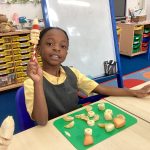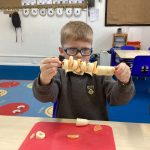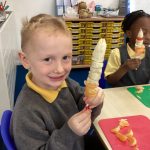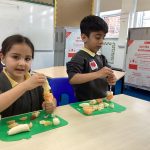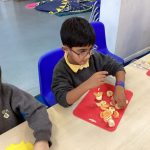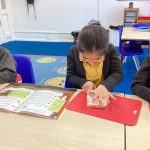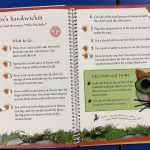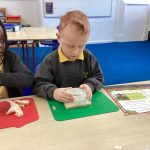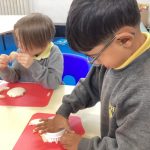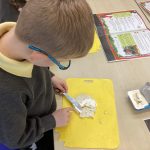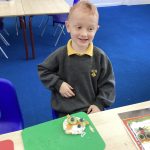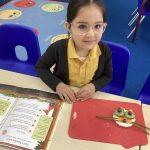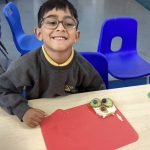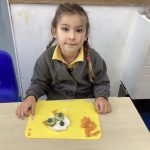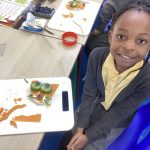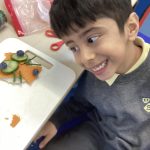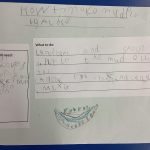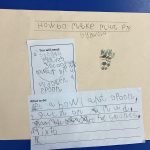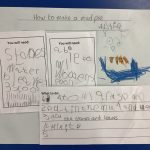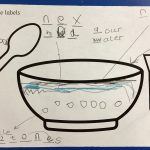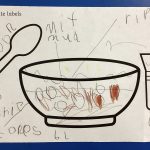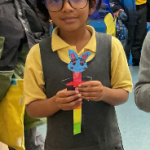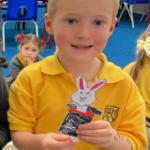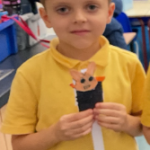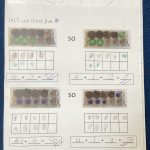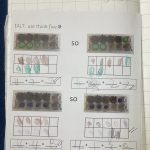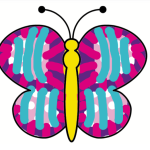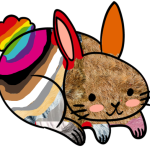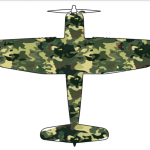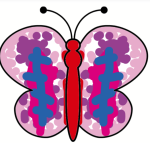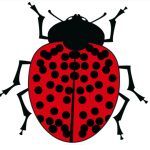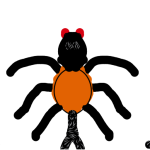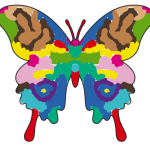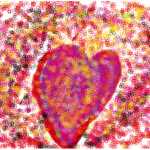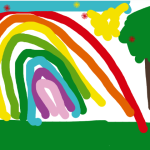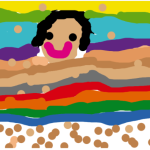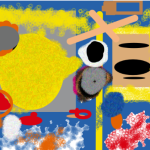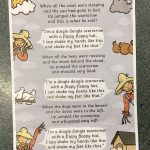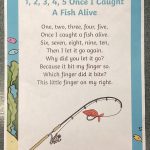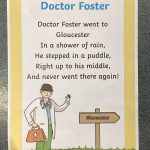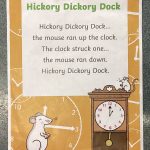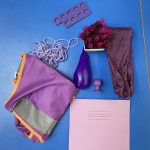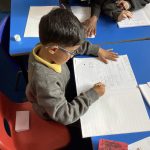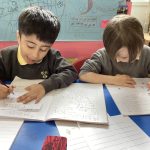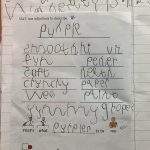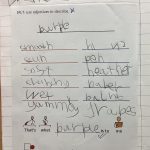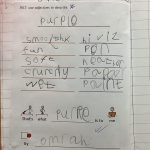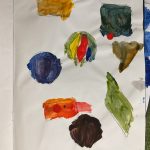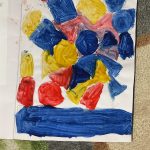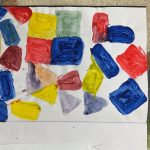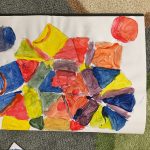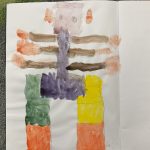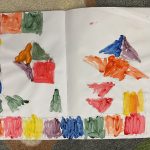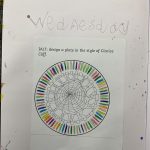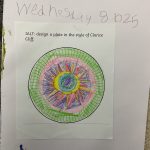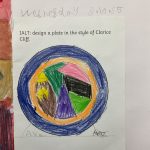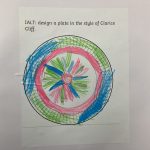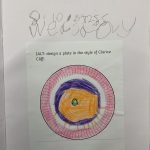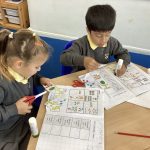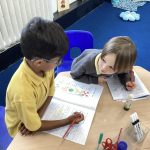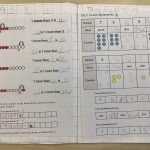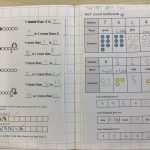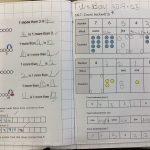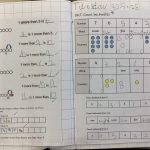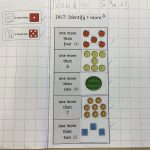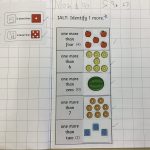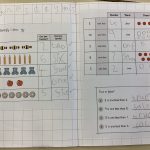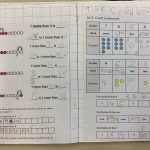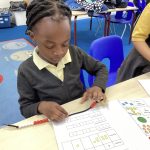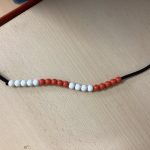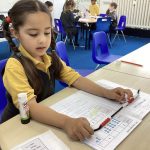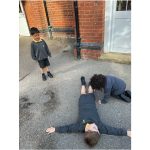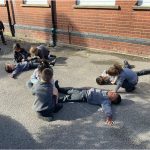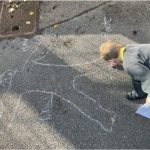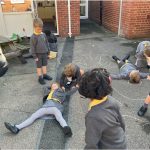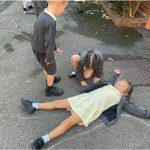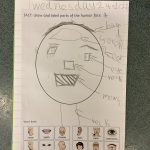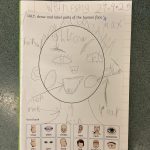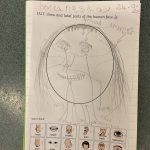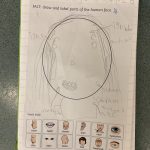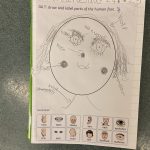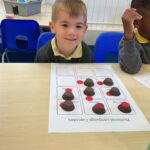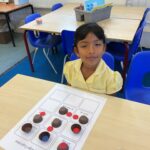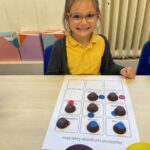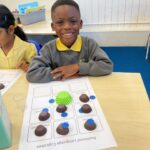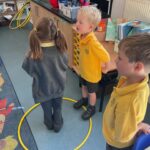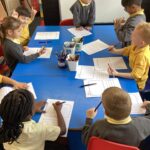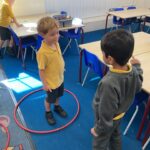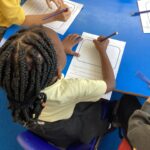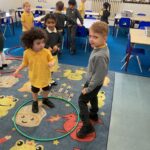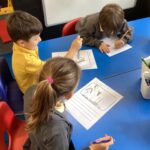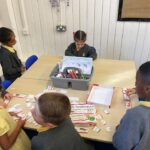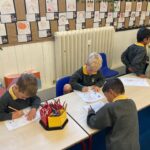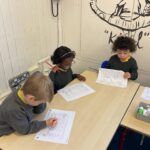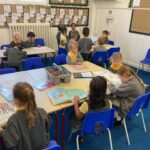Nov 272025
Victorian Adventures: Learning About School in the Past
We have had a busy and exciting start to our new History topic about the Victorians. In our first lesson, we looked closely at old and modern photographs to see how schools have changed over time. We noticed that Victorian children wrote on slate boards with slate pencils instead of using whiteboard pens, and we were surprised to see how plain their classrooms were. The children sat in neat rows, and there were hardly any displays on the walls—very different from our bright and colourful classrooms today!
In our second lesson, we explored whether all children went to school in Victorian times. We found out that children from rich families might have been taught at home by a tutor, while many children from poor families didn’t go to school at all because it cost money. Instead, lots of them had to go out to work to earn money for their families, often doing tough and sometimes dangerous jobs.
This week, we learnt all about Queen Victoria and why she is an important historical figure. We were pleased to discover that during her long reign, school eventually became free and compulsory for all children. This helped make education fairer and gave every child the chance to learn.
We are now really looking forward to our trip to Reveley Lodge next week, where we will be learning even more about life in Victorian times and experiencing it for ourselves.
How to Help at Home:
Talk with your child about how school life has changed, look at old photos together, read Victorian-themed stories, or have a go at writing on a “slate” using a small whiteboard. These small activities can help deepen their understanding and spark further curiosity.
Nov 212025
English in Year 1
Over the past few weeks, Year 1’s English lessons have been focused on ‘writing to inform’. This means that our writing shows that we are telling someone about something. Our lessons have been based on the book ‘Gruffalo Crumble and Other Recipes‘ by Julia Donaldson and Axel Scheffler.
We began by reading the story of ‘The Gruffalo’ and talked about the main characters: the Gruffalo, the mouse, the fox, the snake and the owl. The Gruffalo wanted to have a party with the woodland animals so that they can all be friends. Our first job was to write an invitation to the animals from the Gruffalo.
We then shared the purpose of our writing unit, which was to write recipes for the Gruffalo’s party. We talked about how a recipe gives someone instructions to tell them what they need to do to make a particular type of food. The first recipe we looked at was ‘Terrible Tusks’. As we were reading the recipe, we talked about what makes a good recipe – a title; pictures/illustrations to help the reader see what they need to do; labels and captions; numbered instructions; simple and clear sentences; a list of what the reader will need and a photo to show the reader what the food should look like. We also looked at the recipe for ‘Fox’s Sandwiches’.
Our final task was to go into the forest to make a delicious mud pie for a Gruffalo party! We also wrote a recipe for the mud pie and tried to make sure we included as many features of what makes a good recipe as we could.
How you can help at home:
- Help your child to find a recipe for something they enjoy eating. Look at the criteria above for what makes a good recipe. How many of the criteria can they find in the recipe?
- Encourage your child to write and follow a recipe of their own e.g. how to make a cheese sandwich. We would love to see photos of the finished products on Seesaw!
Nov 132025
Year 1 Design and Technology (DT) – Moving Pictures
ChatGPT said:
Nov 072025
Welcome back!
We have made a great start to the new half term in year one and have quickly settled back into our learning!
We began the week by recapping our new Behaviour Curriculum – the Merry Hill Way. In our classes we revised our core rules of Ready, Respectful and Safe and reminded ourselves of what these core rules look like in our classroom, the playground, the dining hall, the forest etc. We also talked about what the adults would be looking out for when awarding team points this week – ‘We are welcoming to everyone at Merry Hill’. The Year 1 children were great at doing this as we welcomed visitors to our school for the Merry Hill Tours at the start of the week.
In our Maths lessons this week, we have been learning about ‘Think 5’. We began by thinking about all the different ways we know how to make 5.
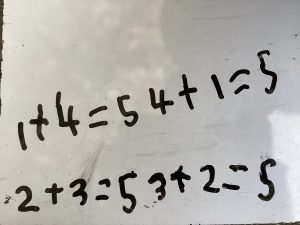
We learned that 5 is a friendly number as it can help us when solving calculations. For example, the tens frame below shows a row of 4 yellow counters and 3 red counters. We have been using addition number sentences to show how many counters there are altogether, 4 + 3=7.

The ‘think 5’ method means we look for a way to make 5 in our calculation. We do this by moving one of the red counters to the top row so that we can clearly see there are 5 counters. We can also see that there are still 2 red underneath, So using the ‘think 5’ method, our calculation would be 4+1+2 =7.
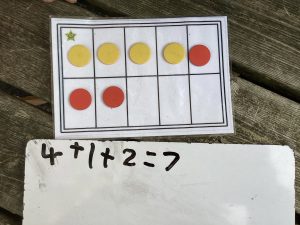
How to help at home:
- Ask your child to draw or write about what being Ready, Respectful and Safe might look like at home.
- Encourage your child to talk about what being Ready, Respectful and Safe looks like when they are walking along the street, in the park, etc.
- Collect five objects and encourage your child to group the objects to show how we can make 5 in different ways, e.g. 4 and 1.
Oct 232025
From Avatars to Art: Our Computing Journey So Far!
In Year 1, we have been busy learning lots of new skills in our Computing lessons! We started by learning how to use the laptops and iPads safely and confidently. We also learnt how to log on to some of the fantastic programs we use in school, including Purple Mash, Numbots, and Reading Eggs.
Our main focus in Computing has been exploring Purple Mash. One of our first tasks was to create our very own avatar. We discovered that an avatar is a picture that represents someone—just like a little digital version of ourselves!
We’ve also been learning about the different areas we can access in Purple Mash, such as our 2Do’s, My Work area, and the Tools section. These help us find our activities, save our work, and explore creative tools.
One of our favourite parts has been using the drawing tools to create our own colourful pictures. We’ve been practising how to save our work carefully at the end of each lesson by giving it a title—just like real digital artists!
After half term, we are very excited to start creating our own puzzles and games using what we have learnt so far. We can’t wait to see what amazing things we will make next!
How to Help at Home
You can support your child’s computing learning at home in lots of fun and simple ways:
-
Encourage practice: Let your child log on to Numbots, or Reading Eggs to build confidence with typing and using a mouse or touchscreen.
-
Talk about technology: Discuss how you use technology at home—like using a phone, sending an email, or searching for information.
-
Promote safe use: Remind your child to always ask an adult before going online and to keep personal information private.
-
Get creative: Explore drawing or puzzle apps together to practise using digital tools and problem-solving skills.
-
Oct 172025
English in Year 1
In our English lessons this week, we have started a new unit in which we are learning about poetry. We began the unit by looking at some poems that are very familiar to us all – nursery rhymes! We talked about all the nursery rhymes we could remember and then had our very own karaoke where we had a great time joining in together to sing and act out our favourite rhymes! We also talked about why we enjoy nursery rhymes so much – many of them have words and actions that are easy to remember, some of them are silly or funny and make us laugh and some can help us with our Maths learning as they include numbers and counting.
We then looked at a poem called ‘Purple is…’ We learned that this type of poem is called a list poem as it is written as a list of things that are purple.
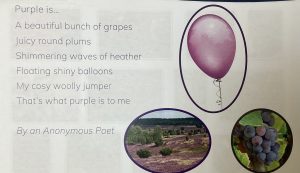
Our next task was to have a try at writing our own ‘Purple is…’ poem. We began by looking at a collection of purple objects. We thought about adjectives that could be used to describe each object and we created our own list poem.
At the end of the week, we collected objects that are red, blue, green and yellow because next week we are going to be choosing one of these colours and writing our own list poem. We can’t wait to share these with you on Seesaw next week!
How you can help at home:-
- Have your own nursery rhyme sing-song at home – talk to your child about which is your favourite and why. Ask other family members about their favourite nursery rhyme.
- Encourage your child to choose a colour and collect objects of that colour from around the home. Can they think of some adjectives to describe the object and write their own list poem? We would love to see any poems uploaded onto Seesaw!
Oct 102025
Art – Clarice Cliff
Oct 032025
Maths in Year 1
This week in Maths, we have been developing our number skills and working out one more and one less than a given number. We have learnt that when you find one more than a number, the original number will get bigger and when you find one less, the original number will get smaller.
We have also been counting forwards and backwards in sequences. This can be quite tricky because we need to remember that our numbers should be getting bigger if we are counting forwards, and smaller if we are counting backwards!
During our Maths lessons in Year 1, we will be learning to use a range of manipulatives, or resources, to help us show our learning in a practical way. This week, we have been using bead strings to demonstrate our understanding of finding one more/less than a number.
How you can help at home:
- Go for a walk around your local streets – have a look at the numbers on the houses you walk past – are the numbers getting bigger or smaller?
- Encourage your child to help set the table at meal times. As they are laying the plates etc, ask questions such as ‘How many plates are there? How many would there be if there was one more/one less?’
- Give your child a number, e.g. 5 and see if they can count forwards and backwards from that number. You may need to use practical resources to help, particularly with counting backwards!
Sep 252025
Science in Year 1
This half term in Science we are learning all about ourselves.
We started the topic by thinking about the names of some of our different body parts. We drew around some of our friends and labelled the different parts of their bodies. We made sure to include lots of body parts like ankles, wrists and elbows.
Then we looked carefully at our faces and identified some of the parts of our face; we noticed eyebrows, eyelashes, chins and foreheads. We worked hard to draw ourselves and then used the word bank to help us label the different parts. Can you tell who is who by looking at the pictures?
Next week we will be thinking about the enquiry question ‘Do older children have bigger feet?’. We will draw around each others’ feet and then use the drawings to help find out the answer to our enquiry.
How to help at home:
- Encourage your child to ask questions and think about how they can find out the answer to them.
- Visit the library and see if you can find some books about humans.
- Draw around a family member and label their body parts.
- Compare yourself to your grown up or a younger brother or sister. What is the same? What is different?
Sep 192025
Year 1 authors!
Due to a technical error, we have been unable to publish photographs this week.
Over the past two weeks in English, we have been learning a range of skills to help us create books about ourselves. We have created a page each day about our self, our family, where we live, our favourite food, our favourite toy and a goal we would like to achieve by the end of year one.
As an author, we have learned that we need to apply many different skills when we are writing our books. We need to be able to:-
- Form our letters correctly
- Use a capital letter for our name
- Label a drawing
- Use finger spaces
- Say our sentence out loud
We have also learned how important it is to have the correct posture when we are doing our writing:-
- Our feet should be flat on the floor
- Our back should be straight
- We need to hold our pencil correctly
- Our book or paper should be at the correct angle
How you can help at home:-
- Encourage your child to create their own book at home, using the above suggestions to ensure correct posture for writing
- Encourage as many opportunities for writing as possible, for example shopping lists, a card for a family member, instructions for a game etc
- Complete the homework set on Seesaw
Sep 112025
Welcome to Year 1
Welcome back, everyone! It has been wonderful to see the bright, happy faces of all the children this week and to meet with you. We’ve had a fantastic start to the new school year, and we are excited to share what we’ve been up to.
In Year 1 we have been exploring our classroom areas and settling into year 1 routines. We were very excited to vote for our new class names, and we are now called Kingfishers and Moorhens.
By now you will have heard about our new behaviour curriculum ‘The Merry Hill Way’. The children have been enthusiastic to learn all about it and are beginning to understand the meaning of the words ‘Ready, Respectful and Safe’. In our lessons so far we have discussed what it means to be ready for school and the belongings we need to bring with us everyday. We also thought about our morning routine to make sure we are ready for learning once we arrive.
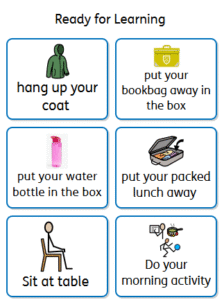
We have also been thinking about what kind and unkind behaviours look like as well as safe and unsafe behaviour.
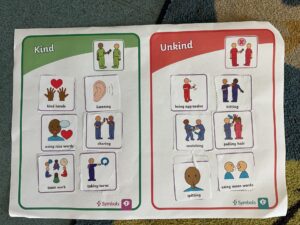
We have been enjoying our maths and English lessons so far. Keep an eye out each week for more detail about what we are doing.
How to support at home:
- Ensure your child has their bookbag, reading record, water bottle and coat in school everyday
- Help your child to keep track of their belongings by labelling everything with their name
- Discuss the new school rules – Ready, Respectful, Safe
- Talk about what our rules might look like at home e.g. ready to leave the house for school
- Look at the homework grid that your child has brought home today – plan out when you will complete each task
Jul 152025
🌟 A Year of Wonder in Year One at Merry Hill 🌟
Oh what a year it’s been in our bright Year One,
A chapter of memories, laughter and fun.
From first nervous hellos on that September morn,
To waving goodbye now — how much you have grown!We’ve tiptoed through time to the Victorian day,
At Reveley Lodge we learned work and play.
In pinafores, caps, we wrote on our slate,
Pretending to curtsy or line up straight.
We saw how they lived in old Bushey town,
With tea cups, saucers and the school inspector’s frown!In Design Technology, with our small proud hands,
We threaded our needles and followed our plans.
Stitch by small stitch, our puppets took their shapes,
Animals from wild bears, orange foxes and even some apes!
We cheered at our triumphs, so proud of our art,
Brave with our scissors, so clever and smart.On Purple Mash screens, we’d excitedly steer,
Sending bees to find flowers, or astronauts near.
We mapped out the mazes with giggles and squeals,
Learning directions with spins and with wheels.
Our minds full of missions, exploring new lands,
Coding adventures with curious hands.In geography, we’ve wandered the UK’s green shore,
Named England, Wales, Scotland and Northern Ireland galore.
Learned of London’s bright lights, Cardiff’s watery bays,
Edinburgh’s castles and Belfast’s fair ways.
And seas all around us, so deep and so blue,
On aerial maps we saw the colours of Britain- grey, green and blue.Through history we met Queen Victoria- grand!
And wondered at dresses and life in her land.We pictured grand banquets, long train rides so slow,
And thought of how Bushey was ages ago…Down cobbled streets in Victorian days,
Children skipped by in bonnets and braids.
They’d call at the shop where the keeper would smile,
And weigh out goods on scales with style.Meat hung in windows by the baker’s wide door,
While bright bolts of fabric lined the haberdashery floor.
At the greengrocer’s stall, fresh apples to choose,
Bouquets from the florist with delicate hues.Off to the fishmonger, baskets in hand,
Gathering all needed across this fine land.
Life bustled brightly in streets long ago,
In the heart of Bushey village, candles aglow.On the carpet in Mastering Number, our brains did ignite,
We counted and reasoned from morning till night.
With counters and games, our maths grew so strong,
We’re maths masters now, we can’t go wrong!🌷 A Special Thank You 🌷
To all of our parents and carers, you’ve stood by our side,
Cheering us on with such love and such pride.
Your support in this journey has meant so much more,
Than we could ever express from our classroom floor.And to the FOMH, our wonderful crew,
Who sprinkle such magic in all that you do.
From planning fun fairs, raising money for new screens,
To the rainbow slide best thing ever seen!
We zipped down the slide, sponsored smiles all around,
Thanks to your kindness, joy truly abounds.Together we’ve built a year shining and bright,
With teamwork and friendship our daily delight.
So here’s to you children, so curious and sweet,
To your giggles and questions and skipping feet.As we close this chapter and look to new skies,
Know how you’ve all sparkled in our caring eyes.
We’ll treasure these moments, keep them so near,
Thank you all for a truly spectacular year.💖 With all our best wishes from the Year One team 💖
Miss Bates, Miss Honnor, Mrs Rogerson, Miss Senghani, Ms Din, Mrs Shaz, and Mrs Bradbury
How to help at home over the holidays:
-
✏️ Read little and often: Share stories daily, explore picture books, comics or information books. Let your child read to you too!
-
🔤 Practise phonics & tricky words: Play simple games like spotting sounds on signs, or writing words in chalk outside.
-
✍️ Keep writing fun: Try postcards, diaries, shopping lists, or even writing a recipe together.
-
➕ Play with numbers: Count out snacks, spot house numbers, do simple addition or subtraction in everyday life.
-
🎲 Board games & card games: Great for turn-taking, counting, strategy and number bonds
-
🌞 Talk about Year Two positively: Chat about the new adventures and things to look forward to, while he weather is often different in each season.
Some types of weather can be described as cold, cloudy, windy, rainy or sunny.
The weather in autumn is often windy and rainy, and turns colder.
Temperature is how hot or cold something is.
A thermometer can be used to measure the temperature of different seasons.
-
